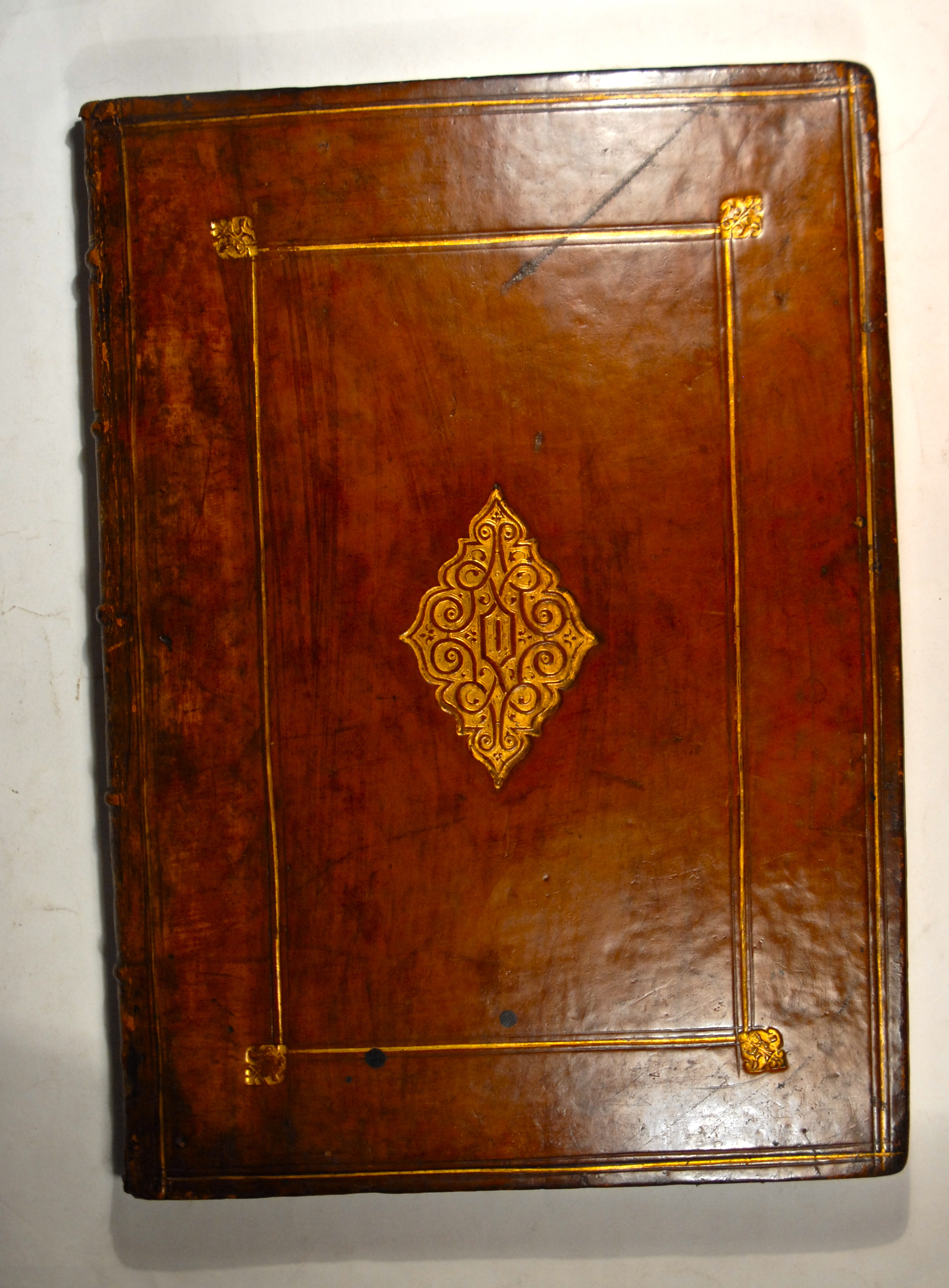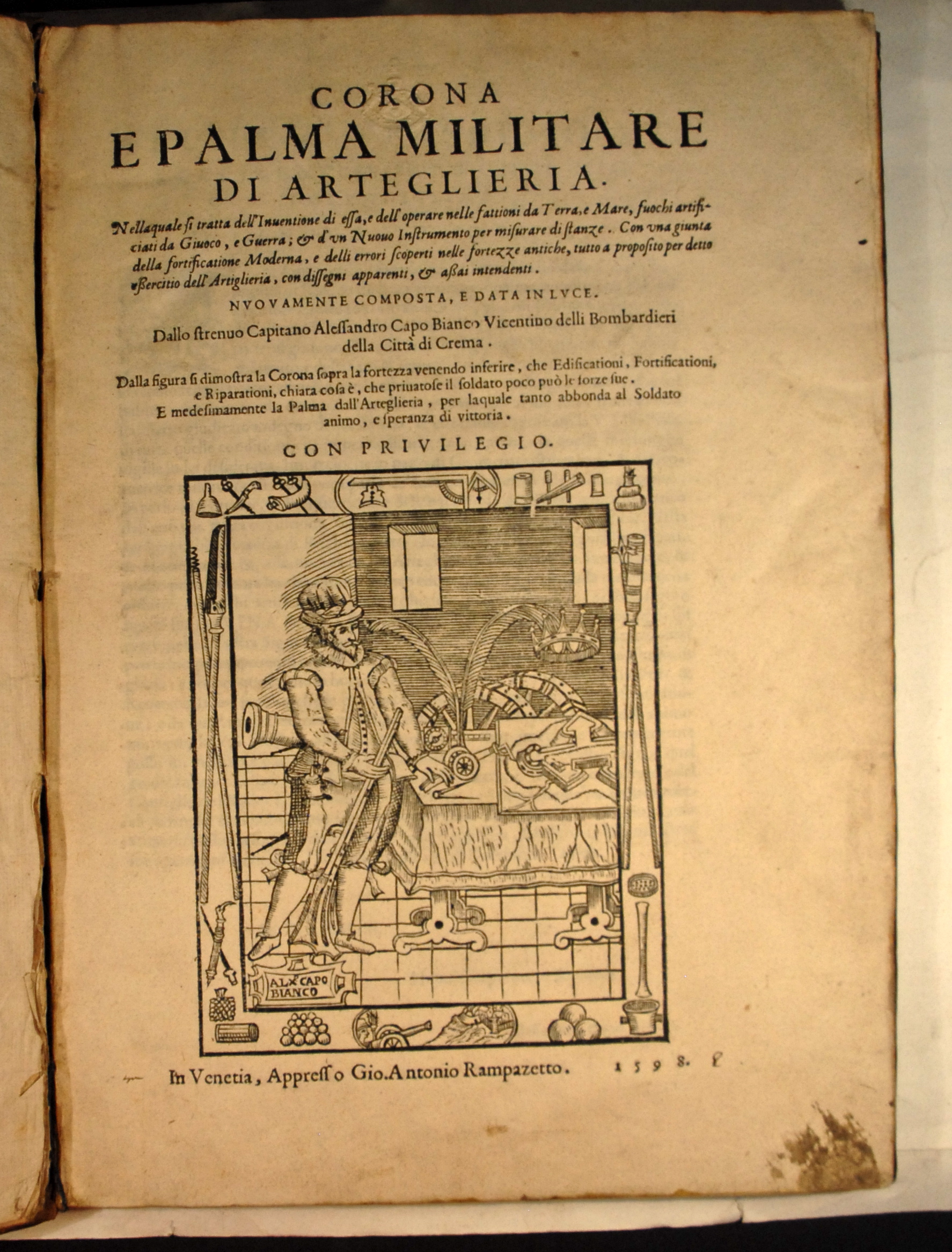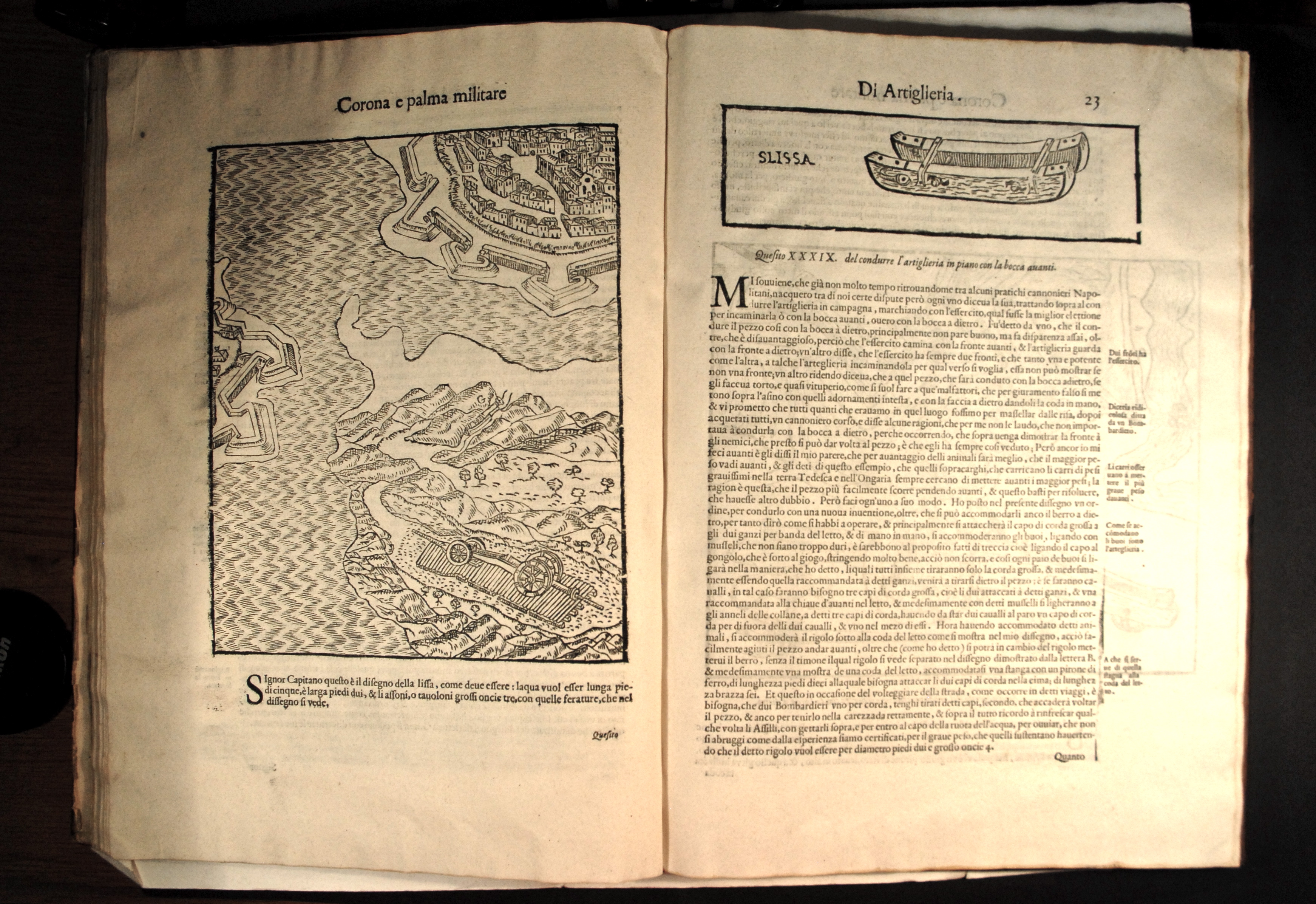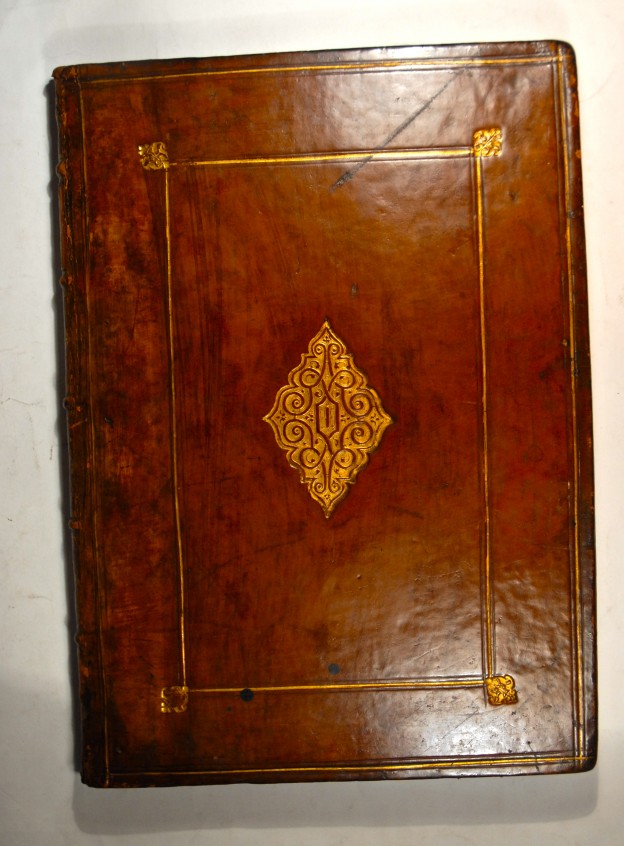CAPOBIANCO, Alessandro
Corona e Palma Militare di Arteglieria
Venice, Giovanni Antonio Rampazetto, 1598£12,500.00
FIRST EDITION. folio, ff. [iv] 58. Roman letter; woodcut portrait of the author in his study with military apparatus on title-page, woodcut historiated initials, 95 woodcut illustrations in text, printer’s woodcut device on verso of last. C19 armorial bookplate of the Earl of Macclesfield on pastedown, Shirburn Castle blindstamp to first three ll, seventeenth-century inscription “Sutton Place”on flyleaf. Small ink splash to blank lower outer corner of t-p, title and verso of last fractionally dusty. A fine, crisp, very well margined copy (some fore-edges untrimmed), in high quality contemporary English tan calf, spine with raised bands gilt in compartments, covers gilt and blind ruled to a panel design, fleurons gilt at corners, gilt arabesque lozenge at centres, spine slightly worn at head and tail.
A fine copy of the first edition of this important, rare and profusely illustrated work by Capobianco, Captain of the Bombardiers of the city of Crema, that brings together all the technical advances in artillery in the C16, dedicated to Antonio Prioli (future Doge of Venice) and Lunardo Rossetti. By the middle of the 16th century Italian theorists and military architects had perfected the bastioned system of fortification and the Italian method was an admired standard throughout Europe. “during the sixteenth century the emphasis shifts south of the Alps. And after 1550 Italian military writers dominate the field to the point of monopoly.” (Horst de la Croix, ‘The Literature on Fortification in Renaissance Italy’.) The use of cannons against these new bastioned fortresses required new tactical thinking, which Capobianco elaborates in this work. A veteran of many campaigns in both Italy and the Low Countries he was an expert gunner, though like many of his colleagues he was not a literary man, and his versatility and inventiveness are best shown by his plans and designs. A skilled bombardier, he presents the reader with a sweeping survey of the aims and techniques of artillery around the turn of the C16, starting with the technical use of cannon, their various types and specific purposes, the comparison of modern and ‘antique’ cannon, their manufacture, sighting etc. He then moves on to the tactics of artillery in defence and attack, the placement of cannons, their transportation, storage and the storage of munitions, the use of rockets and fireworks, and finishes with a brief but insightful description of ‘modern’ fortification, and bastion techniques.
The binding of this copy is identical in style, with the same central arabesque tool, to a book bound for Thomas Knyvett c. 1610, see David Pearson, English book binding styles 1450-1800, page 9, fig. 1.3. Sir Thomas Knyvett (1539-1618), barrister, of a leading Norfolk family with estates in Lincolnshire, Suffolk, Staffordshire and Yorkshire started to build his splendid collection after the first flood of books and manuscripts from the monastic libraries. At his death his library numbered approximately 1,400 titles and 70 manuscripts on various subjects, as recorded in his library catalogue now in Cambridge University Library, which also received much of his collection in 1715. Favouring original texts, he became proficient in many languages, nurturing a particular love of Italian, owning at least 80 Italian books. Never a very rich man, the size of his library is extraordinary for the period, and it is likely that many of his books were obtained second hand. This binding is typical of those bound for his collection.
Sutton Place, built in 1530 for Sir Richard Weston, is celebrated as a pioneer of the Renaissance style in England, an early Tudor House, innovative for the symmetry of its design and its Italianate terracotta decoration. It was later the home of J. Paul Getty.
Not in BM STC It. Index Aur. 131.683. Riccardi I, 232. Cockle 673.In stock





